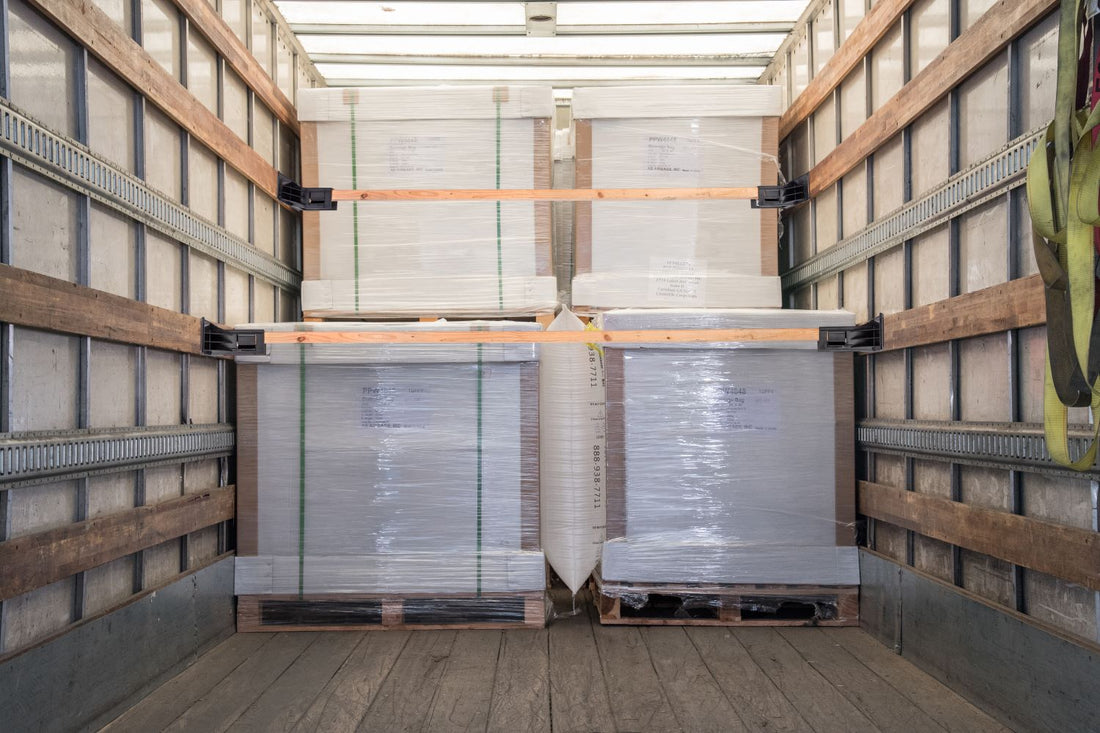
Void Size: What It Means for Dunnage Bags

Dunnage bags are essential for safely securing cargo inside an enclosed trailer or aircraft. By placing them in between loads, they work by filling up the space, otherwise known as a "void." This braces the cargo to prevent any shifting or movement that causes damage during transportation.
When it comes to choosing which dunnage bag size to use, you need to know a couple of key things. such as the size and width of the space between your loaded cargo. This gives you an idea of how long the void size needs to be for your dunnage bags.
So what does "void size" really mean? We discuss what it means and why it's important in choosing the right dunnage bags for your application.
What is Void Size?
The void size for dunnage bags refers to the space between cargo pallets or other bulk items that can be filled in with these inflatable products. Void size measures how wide the dunnage bag can inflate to optimally secure cargo without deflating or popping.
- Browse through our Dunnage Bag Inflator products.
For example, if two rows of pallets are placed inside of an enclosed trailer, and the void between the two pallets is 10" long, you'll want to choose dunnage bags that can fill up this gap. When loading pallets and other cargo into these containers, it's important to keep the void size in mind so as not to create areas too small or too large for the dunnage bags to handle.
Also keep in mind the void sizes for the dunnage bags you plan to use. If the void size of the bag is greater than the void between cargo, you risk damaging the dunnage bag itself as well as the cargo from dealing with the overpressure of the bag.
Void Size vs. Width Size
The width size of a dunnage bag refers to its length and height when laid flat and deflated on the ground. When choosing a dunnage bag based on its width size, you should always consider its void size; otherwise, you could end up with an oversized or undersized bag for your cargo.
The void size only takes into account the max width of the bag when inflated, whereas the width size measures the length and height of the bag when deflated. So while two different-sized bags may have similar widths when laid out flat, their actual capacity can vary greatly based on their respective void sizes!

How to Choose Dunnage Bags by Void Size
You should be considering both the void size and width size of the dunnage bag when choosing one (or multiple) for your needs. Both measurements work in tangent by considering the length, width, and height of the void size and determining the best type of dunnage bag to apply.
Our chart below helps guide you on creating the appropriate void sizes according to different widths:

Cubic Area
You can also determine the cubic area of the entire void of all your cargo to determine how many dunnage bags are needed. To calculate this, take the length of the total area, multiply it by the total height, and then multiply it by the width:
L x W x H = A3
This gives you the cubic area you need to work with and lets you know that any dunnage bag you use should be able to accommodate at least this much space in order for it to properly secure your cargo.
Configuration
Once you determined the cubic area of your void, you need to configure your dunnage bag setup. Ask yourself how you plan on placing them in your enclosed trailer or container. This is partially determined by a couple of factors:
-
Cargo Setup
The way you stack cargo inside of your trailer affects how to lay the dunnage bags appropriately. If one side of the trailer is double-stacked and the other isn't, then your dunnage bags need to accommodate the shape of the void.
-
Shoring Beams
Shoring beams and other cargo bars are great tools to help reduce wasted space and create a more optimal setup for your trailer. However, these items could potentially be in the way if you plan on using dunnage bags. Consider what your trailer looks like with
Make sure that whatever option you select can accommodate all objects with plenty of room left over in case additional items need added later!

Dunnage Bags from US Cargo Control
We offer different sizes of dunnage bags to suit your cargo protection needs. Each of our Level 1 AAR-certified bags contains a polyethylene bladder that completely inflates/deflates within 30 seconds or less. They also have a protective polypropylene exterior that reduces damage from punctures, abrasions, and other strong forces.
- Learn more about our dunnage bags
There are currently 5 widths to choose from to help stabilize your cargo: 24", 36", 40", 48", and 52" widths. We also offer inflator guns for easy access and inflatability, as well as our all-in-one dunnage bag kit. This keeps everything you need in one nice tote bag.
More Articles You May Like
3 Accessories Every Enclosed Trailer Should Have
Do's & Don'ts of Load Securement on Trailers
E-Track Load Bars vs. Shoring Beams: What's the Difference?



